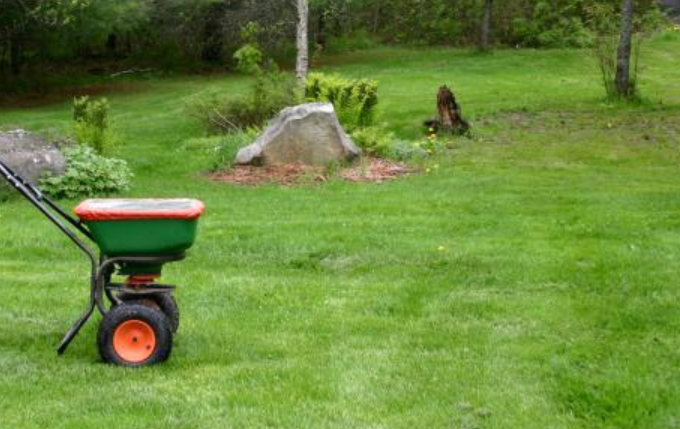It doesn’t matter how fertile your lawn soil is; overtime, it loses much of its natural nutrients and need to be replenished. Fertilizers contain nutrients such as nitrogen, phosphorus, and potassium, all of which are necessary for the proper growth of the grass.
For you to achieve a healthy lush green lawn, you do not need to just apply fertilizer on your lawn; you need to do it the right way. Fertilizers are very expensive and using more than necessary is a waste of your hard-earned money and unsafe to the environment.
On the other hand, going for so long without applying fertilizer on your lawn grass could cost you the grass since it will be depleted of essential nutrients. This will lead to unhealthy grass and eventually a lawn full of weeds.

How often to Fertilize a Lawn
How often you fertilize your lawn usually depends on the growth season. Below is a fertilizer schedule for spring, summer and fall.
Fertilize lawn in spring
In early spring temperatures warm, grass and weeds starts waking up. This is the best time to control weeds and apply fertilizer to strengthen roots and boost the growth of your grass. Fertilize only once between February and April.
In late spring, the grass is almost getting hungry after using most of the nutrients for active growth. Between April and June, feed your lawn with a weed control fertilizer.
However, do not use a weed and feed fertilizer if you plan to overseed as it may affect the germinating of new grass seed. Be sure to follow label instructions carefully when fertilizing.
Fertilize lawn in summer
In early summer, proper feeding helps strengthen grass against heat, drought and foot traffic. Apply summer lawn fertilizer in between June and August. Always allow 6 to 8 weeks between fertilizing and your first expected frost.
Fertilize lawn in fall
The fall season, around mid-October, is the best time to fertilize your lawn. This is because the season has the best weather conditions and a lot of growth takes place around this period.
Fertilizing your lawn during this season helps the grass do a lot of growing and gain a lot of stamina as it braces itself for dormancy during winter. You can schedule the fertilizer until you see the first frost date in your neighborhood.
Consider mowing the grass before application so that the fertilizer can easily and slowly seep into the soil. Although the season has the perfect conditions for fertilizer application, consider doing it in the morning before temperatures rise and winds become strong.
Can you fertilize a lawn in winter?
During winter, both air and soil temperatures drop drastically, and this sends all plants, not just grass, to dormancy. This is because in those temperatures, there is no sunlight whatsoever and thus there cannot be any growth of plants taking place.
Applying your fertilizer in this season would not be helping in any way. Most of the fertilizer would be washed away by the heavy precipitation experienced in the season and end up downstream. This is a serious contributor to environmental degradation.
Instead of fertilizing your lawn in winter, consider doing so in spring (mid-April) when both the soil and air temperatures are favorable. But still, you have to wait for the soil temperatures to hit 55° Fahrenheit. You can easily tell this when lilacs will start blossoming all over the environment.
The blossoming of the lilacs will be followed by the onset of the growth of grass and this should give you the go-ahead to apply the fertilizer. For accuracy reasons, you can buy a soil thermometer from an agricultural supplies store near you or even online.
At this time, the grass has resumed growth and the fertilizer will act as a boost to spring up after so many days of dormancy.
Can I fertilize my lawn every 2 weeks?
No, you cannot fertilize your lawn every two weeks. Doing so is a waste of money and effort because the grass does not need that much. What will happen is that you will be left with too much fertilizer on the surface of your lawn and at the end of the day; most of it will go to waste.
The need to fertilizer your lawn every two weeks is brought about by faster results, in this case you can use the faster release fertilizers. Often, the faster release fertilizers are synthetic and have a higher N-P-K rating that boosts the growth of the grass in a very short span.
They are most recommended for young new lawn grass since this one needs a boost to spring up. On the flip side, they have chemicals that do more than harm to your lawn soil, something that will affect the proper growth of grass later.
The faster results, the shorter the nutrients last in the soil and this calls for frequent applications. As an alternative, go for the slow-release fertilizers. They do not give immediate results but they are the best since they are made of purely animal and plant matter.
Slow release fertilizers do not contain harmful chemicals undesirable for your lawn soil. The results may take some time to show but once they start, they will be a long time. These fertilizers are recommended for established lawn grass, compared to new grass.